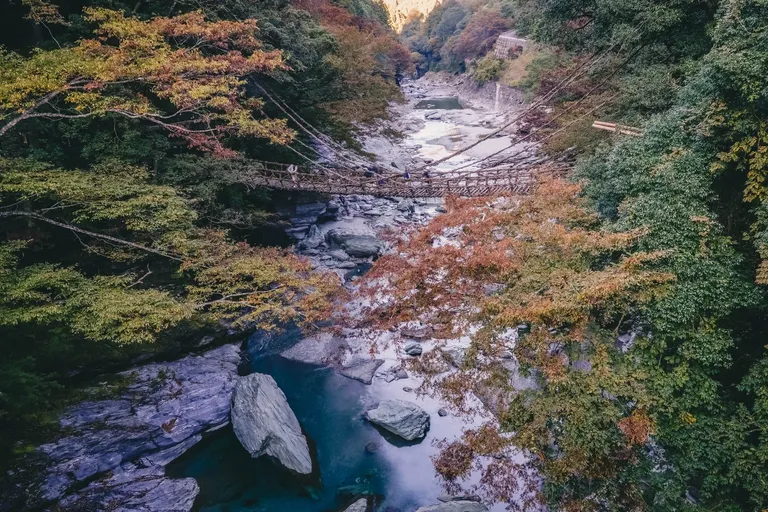
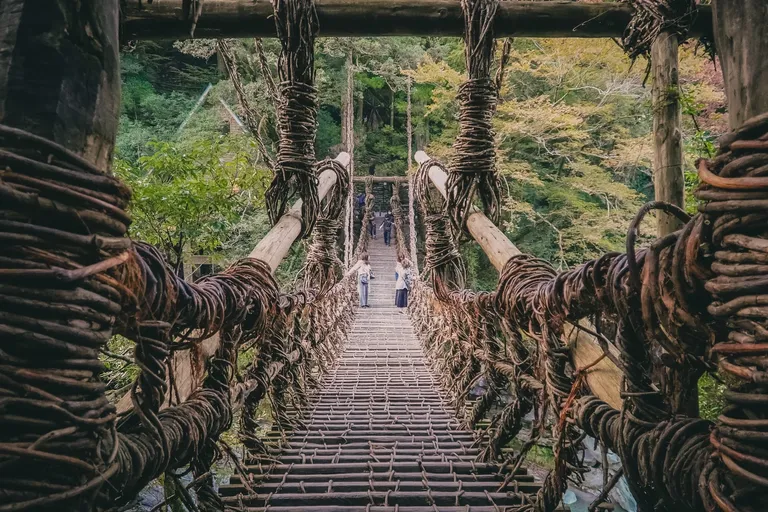
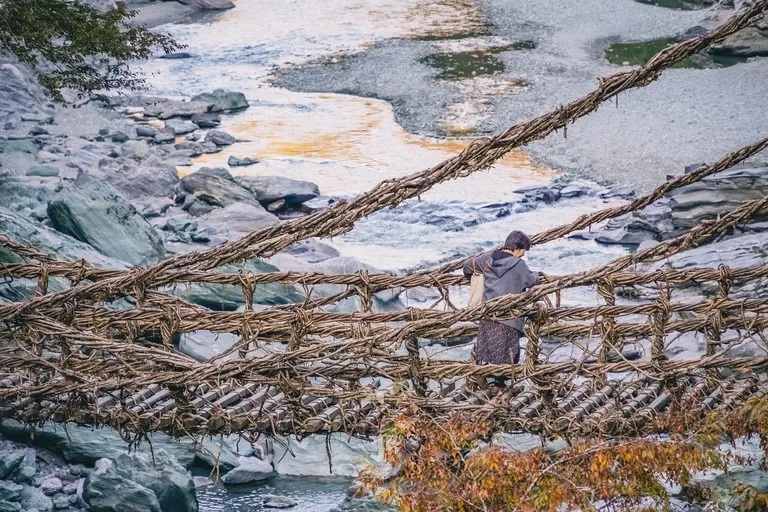
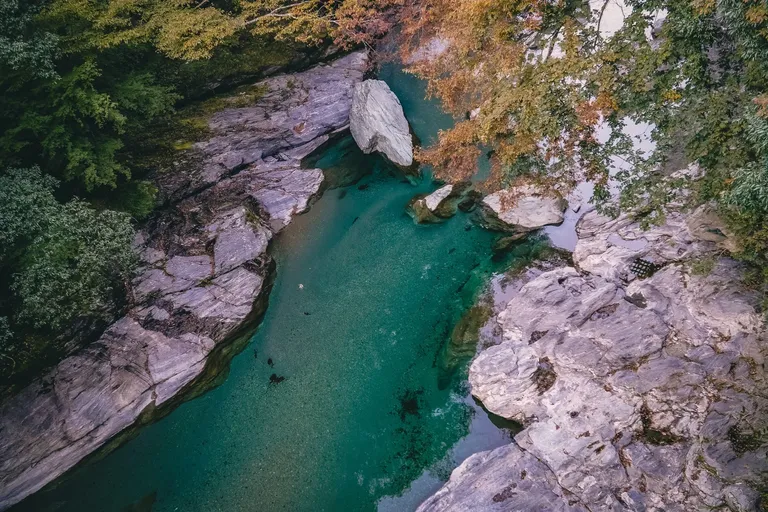
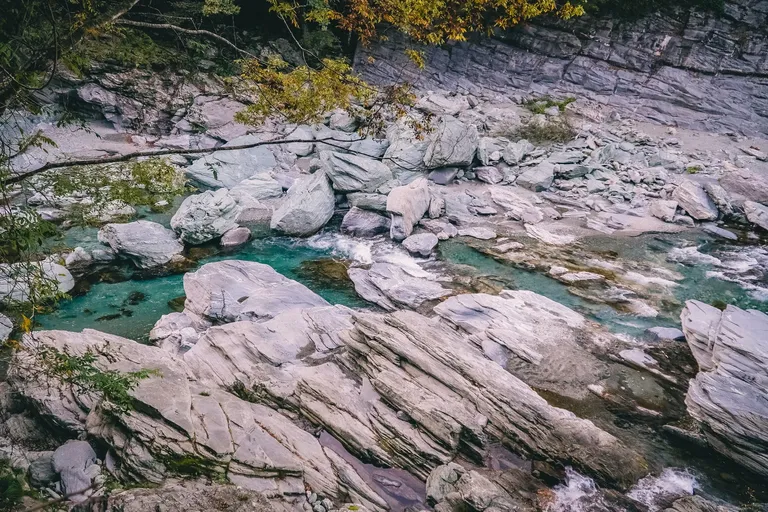
Speaking of waterfalls, there's also a famous one in Iya Valley, a region on Japan's Shikoku Island about which I've been blogging recently.
The Biwa Waterfall is 50 metres high and located near the Kazurabashi Bridge, also known as the First Vine Bridge. I mentioned it in my earlier post about the second Oku-Iya Kazurabashi, which consists of two smaller bridges.
Biwa is a plucked string instrument that has traditionally been used in storytelling. The two Chinese Kanji characters for this waterfall were familiar to me. Biwa was a popular instrument in China before spreading across East Asia and finally making its way to Japan during the Nara era (Thank you, Wiki!).
According to the sign standing next to the waterfall, Taira(Heike) clan folks fled to this location after being defeated by Minamoto clan warriors. They were playing biwa by the waterfall to express nostalgia for their hometown Kyoto.
A route heading down to the riverfront can be found if you stroll past the waterfall. From there, you can view the enormous boulders, crystal clear water, and the reflection of the vine bridge up close. It was refreshing walking along the creek and skipping some stones, and there was occasional shouting from visitors crossing the wobbly bridge up there.:)
As it is said to be connected with the historical narrative of the well-known Genpei conflicts, the Kazurabashi bridge is recognised as a tangible folk cultural heritage of Japan. These battles occurred in the 12th century between the Taira (Heike) and Genji (Minamoto) Clans.
The defeated Heike clan relocated here in the hopes of restoring power in the future. Despite the fact that it was never realised, their traditional customs had been maintained thanks to this region's remoteness and isolation.
So the Heike people are believed to not only play the biwa music near the waterfall, but also to have created the vine bridges (including the two described in my previous post) to cross the river. They utilised vines from surrounding mountains to cut themselves off when pursued by their foes.
Another legend has it that the bridge was erected for the convenience of the inhabitants by the renowned founder of the Shingon School of Buddhism, Kobo Daishi (Kukai).
Whatever its origins, the bridge has drawn travellers with its breathtaking natural beauty. The vines mix in wonderfully with the natural surroundings, and I came in early autumn when the foliage looked so vibrant.
This site, I suppose, has its own charm in each season, and the bridge is open all year. I read that the bridge is even lighted up from 7 p.m. to 9:30 p.m., but we didn't remain until it became dark.
The first bridge here had more tourists than the second two bridges owing to its more accessible position. Because it's longer and higher, crossing it felt even more thrilling together with the sway caused by others.
You'd get an adrenaline rush walking the 45-metre length with the rushing stream 14 metres below your feet, just as I did. It could be frightening at first, looking at the ancient vines, the old trees anchored at both ends, and the narrow slats of the hanging bridge. But there's no need to be concerned about safety since steel wires run through the structure, hidden by the vines.
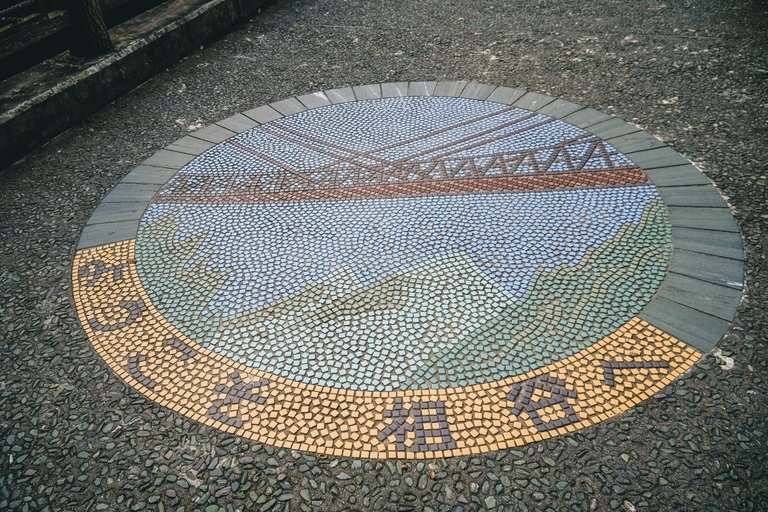
阿尔卑斯山里的瀑布让我想起最近在写的祖谷山区也有个琵琶瀑布,今天就来接着分享那里的美景。
琵琶瀑布高达50米,在第一藤桥附近,先前发过位于奥祖谷的两座夫妻藤蔓桥,而这次的单座桥更大更有名。关于琵琶瀑布名字的来源,又是和平源两大武士氏族的征战有关,旁边的标牌上说:被击败后逃亡到这里的平家人们在瀑布旁边弹奏琵琶,以表达对家乡京都的思念。
走过瀑布后,可以沿着小路下到河边,水流清澈的两岸分布着巨大的石块,从河面能看到藤桥的倒影,还不时飘过来游客过桥时惊恐的尖叫声······
根据传说,逃亡到此的平家人用山里的藤条编造了这座大桥,打算遇到敌人追杀时就砍断藤桥逃生。
另一个比较佛系的说法是:8世纪时,日本佛教的真言宗派创始人弘法大师(空海)在此地造了这座藤桥来方便村民过河。这位弘法大师是平安时代的大名人,生于四国地区,集传教士、公务员、诗人、学者、艺术家、工程师于一体,据载曾到过中国的西安留学取经,在日本不少地方组织建立了佛教寺庙,包括四国的88座朝圣寺庙,每年都有众多信徒前来朝圣。现今日本的很多寺庙仍然立着空海的塑像,对他进行供奉。
不管这座藤桥的历史起源是什么,它融入周边的自然美也足以吸引游客,让人惊叹了。在45米长、14米高的藤桥上走,感觉十分惊险刺激,那种体验我已经在二桥那篇中描述过,这里就不重复了。而且因为更高更长,加上其他游客也在过桥造成晃动幅度增大,感觉更加惊悚。
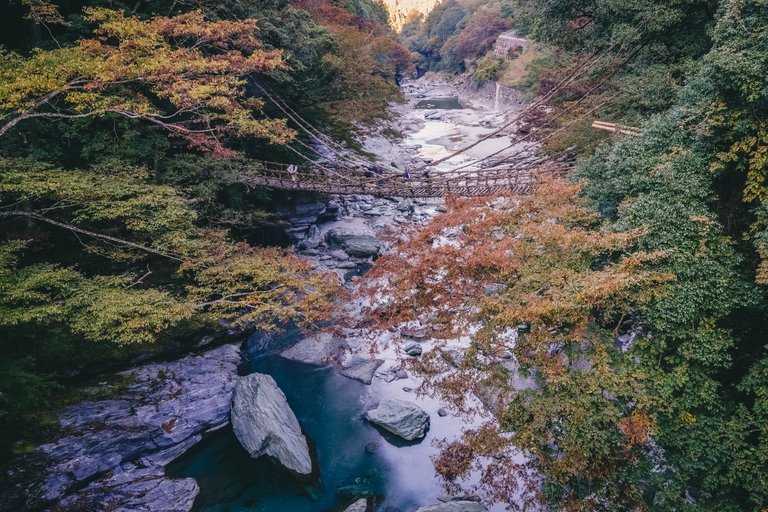
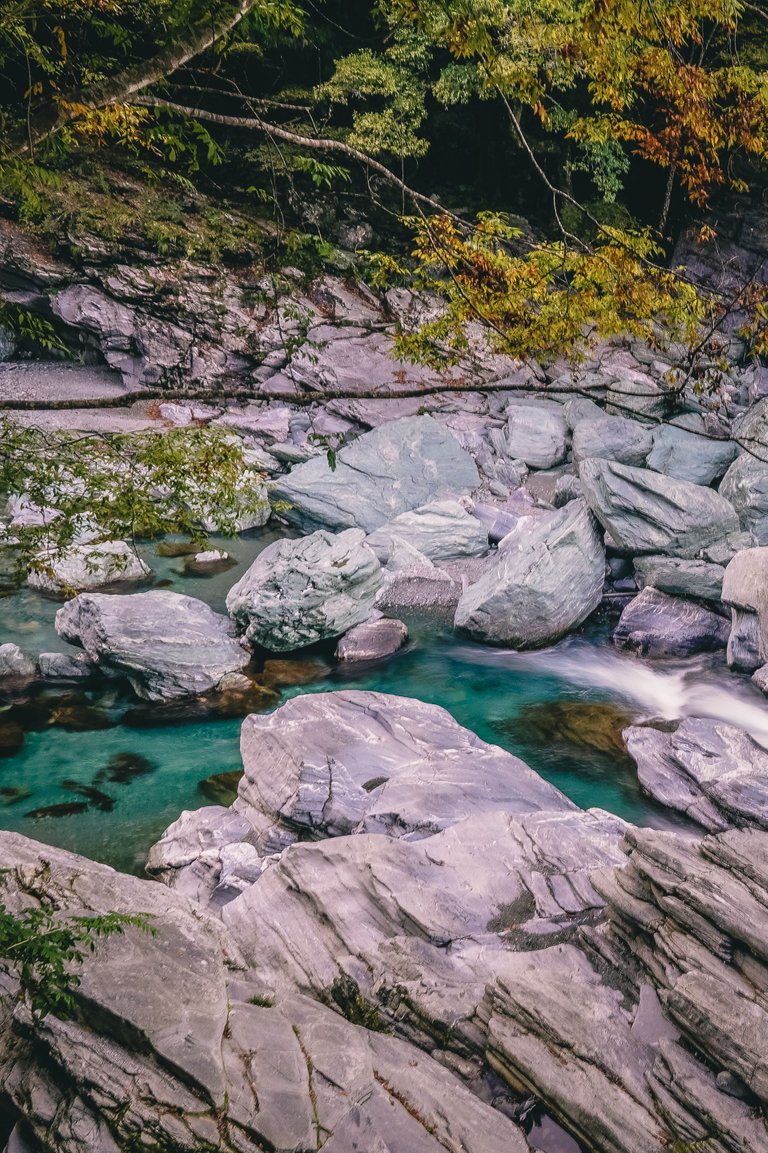
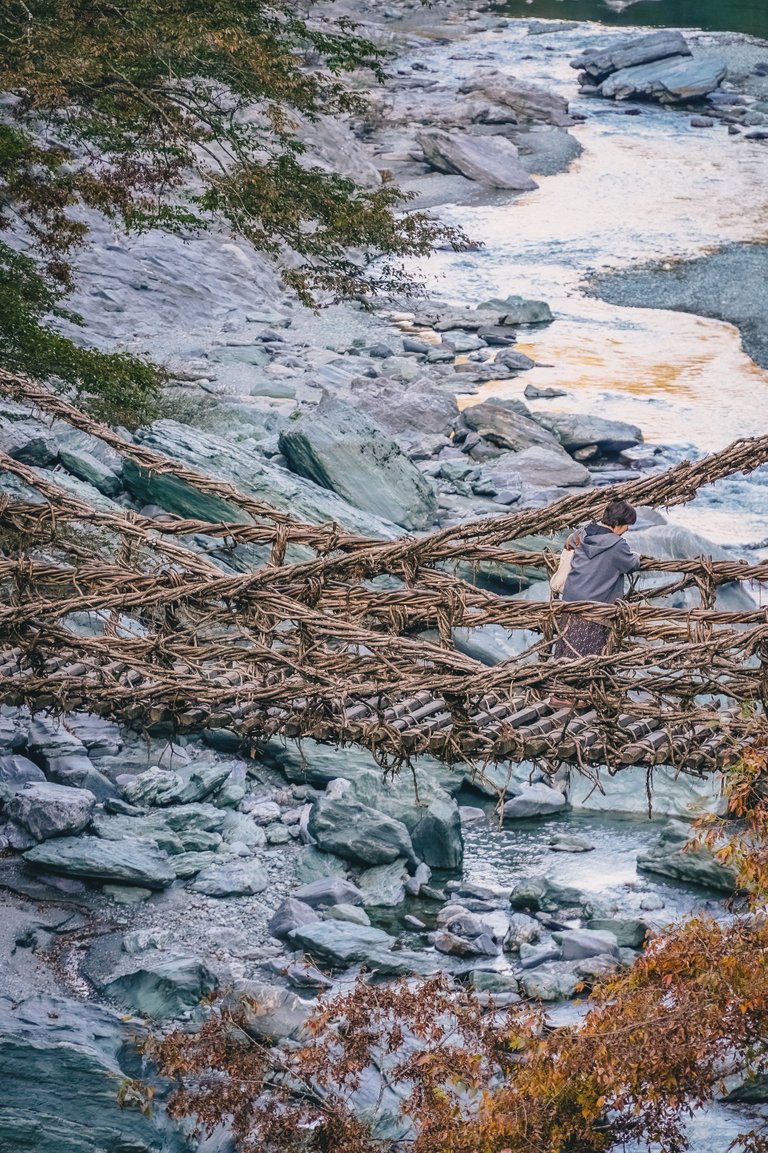
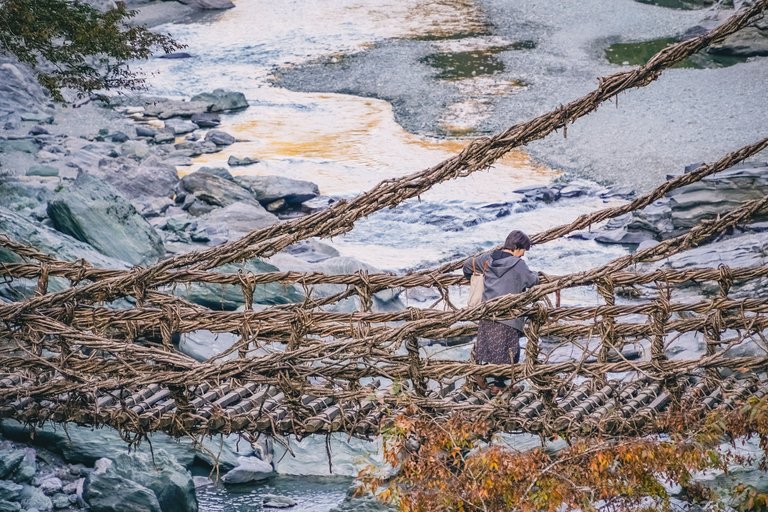
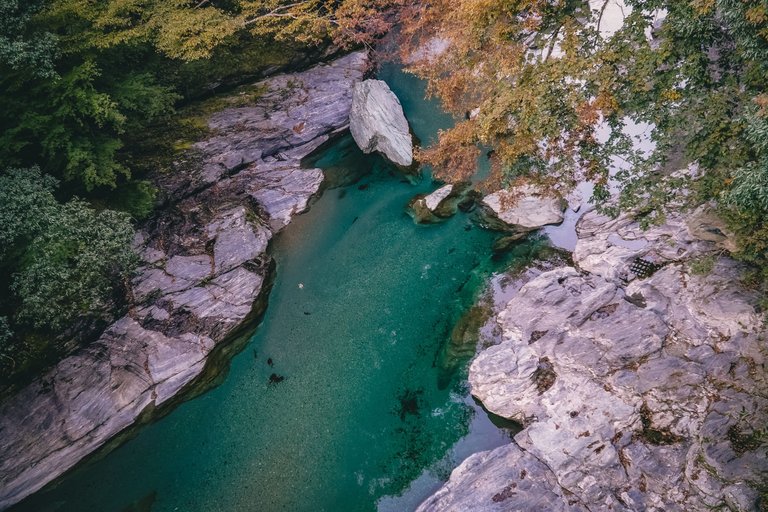
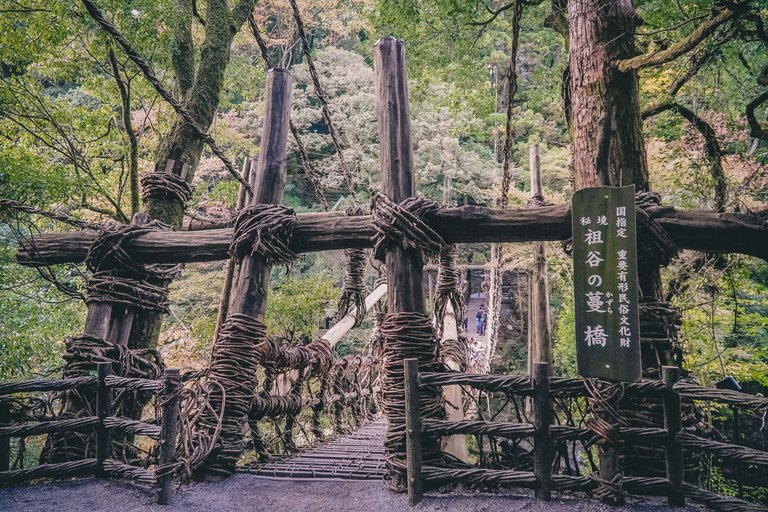

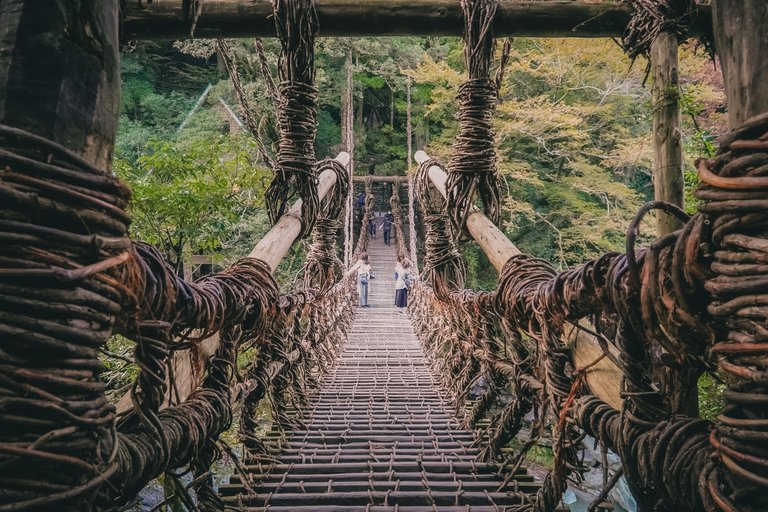
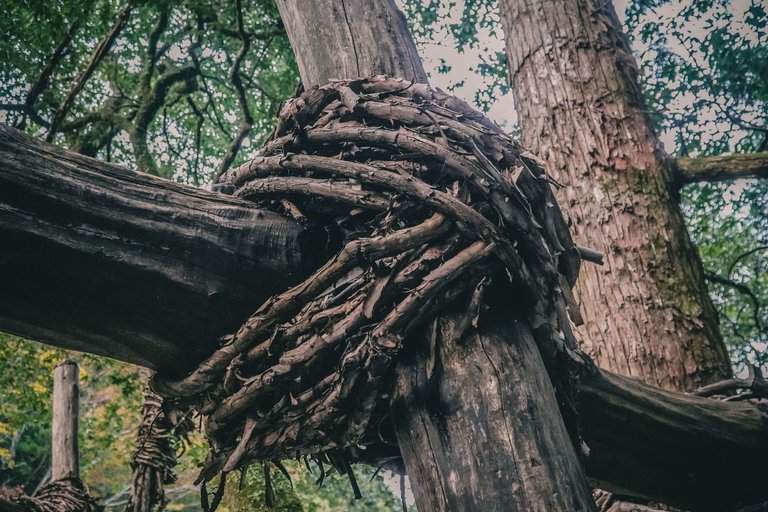
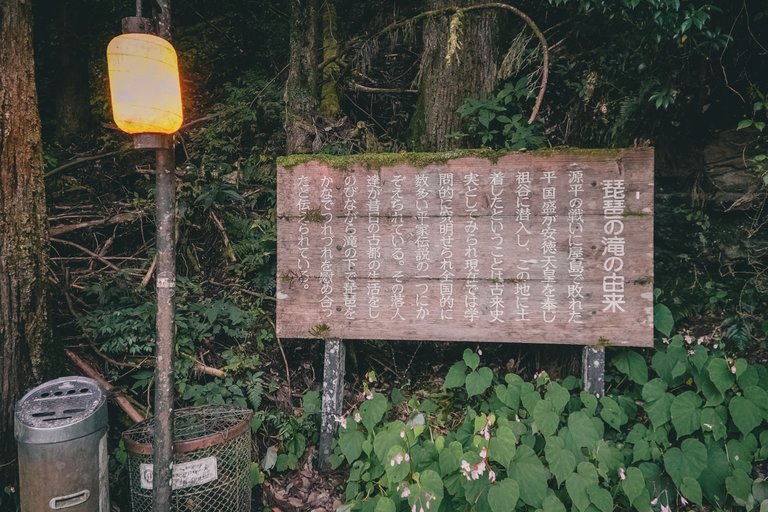

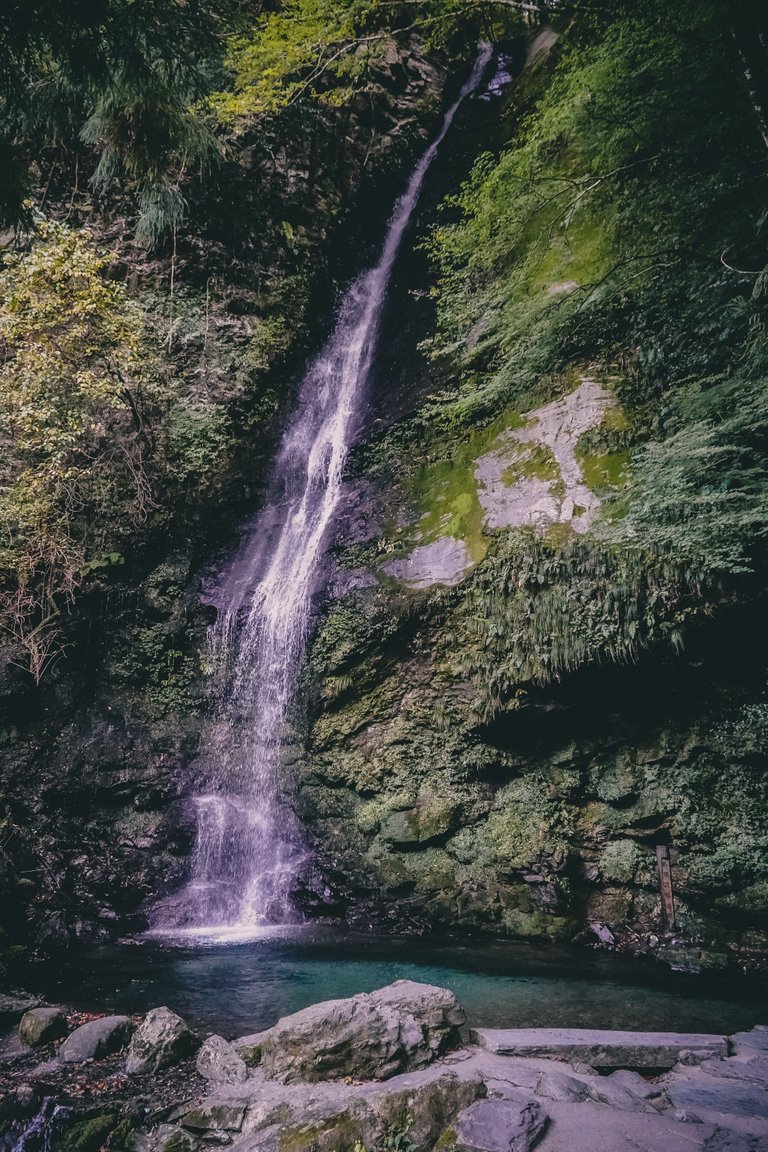
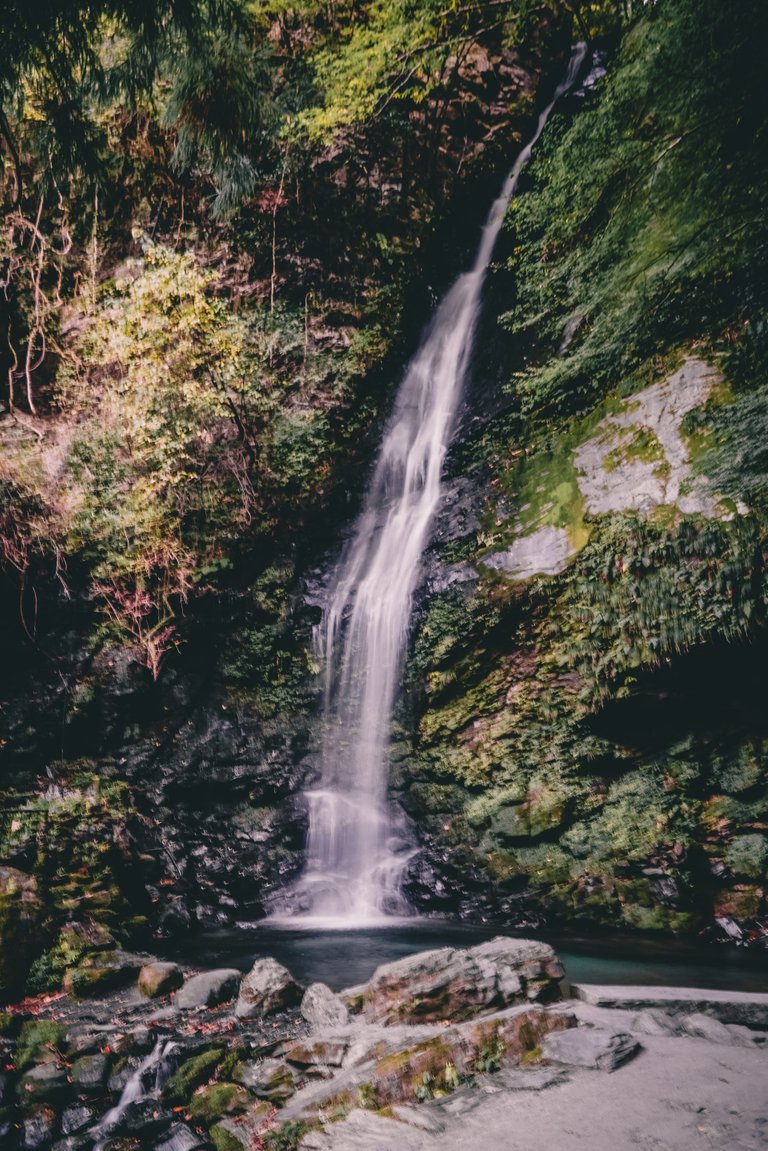
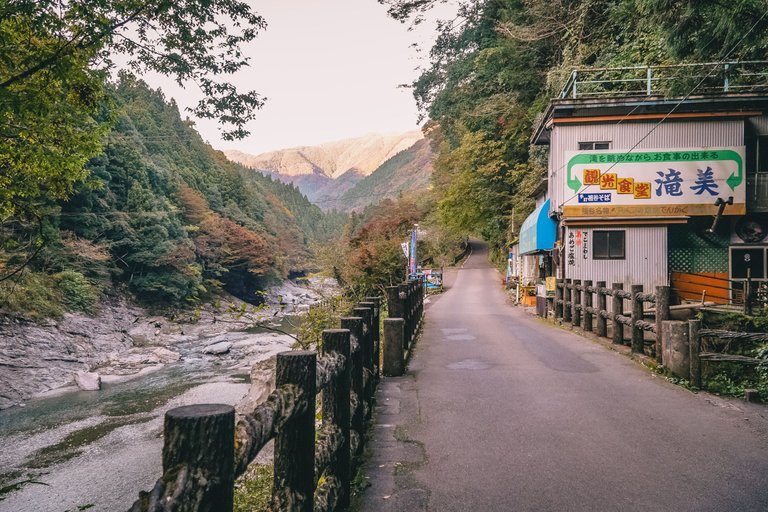
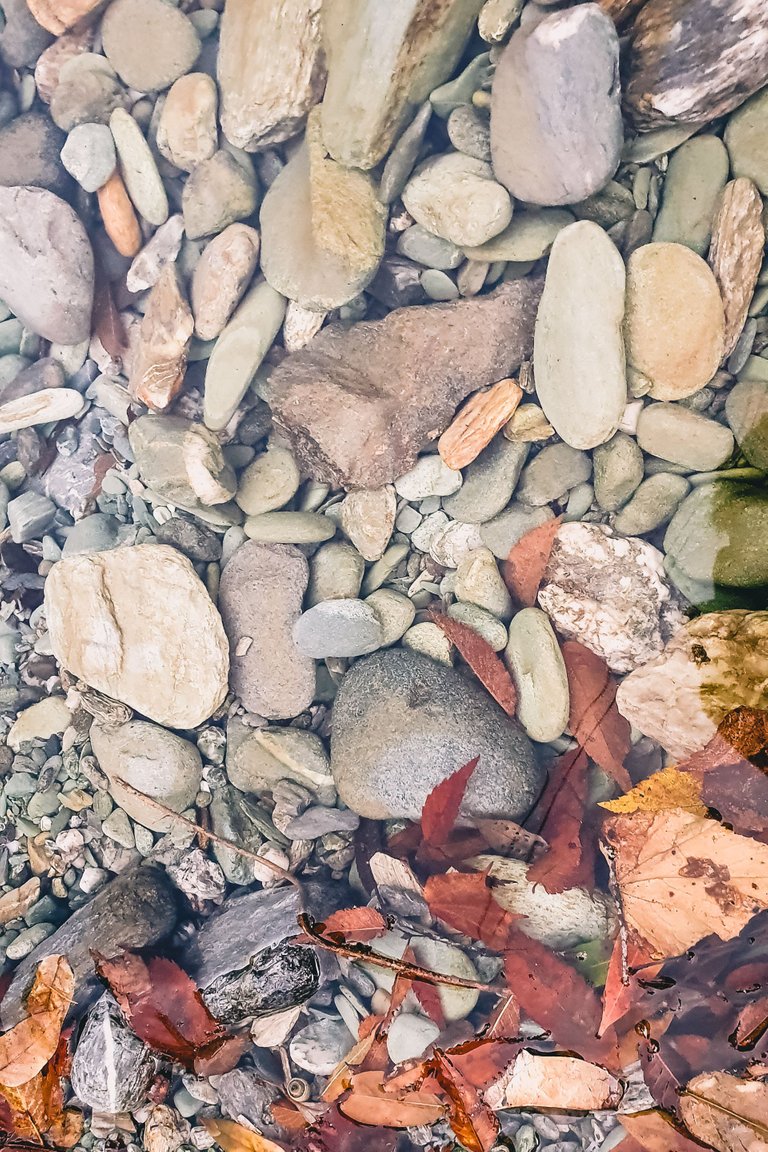
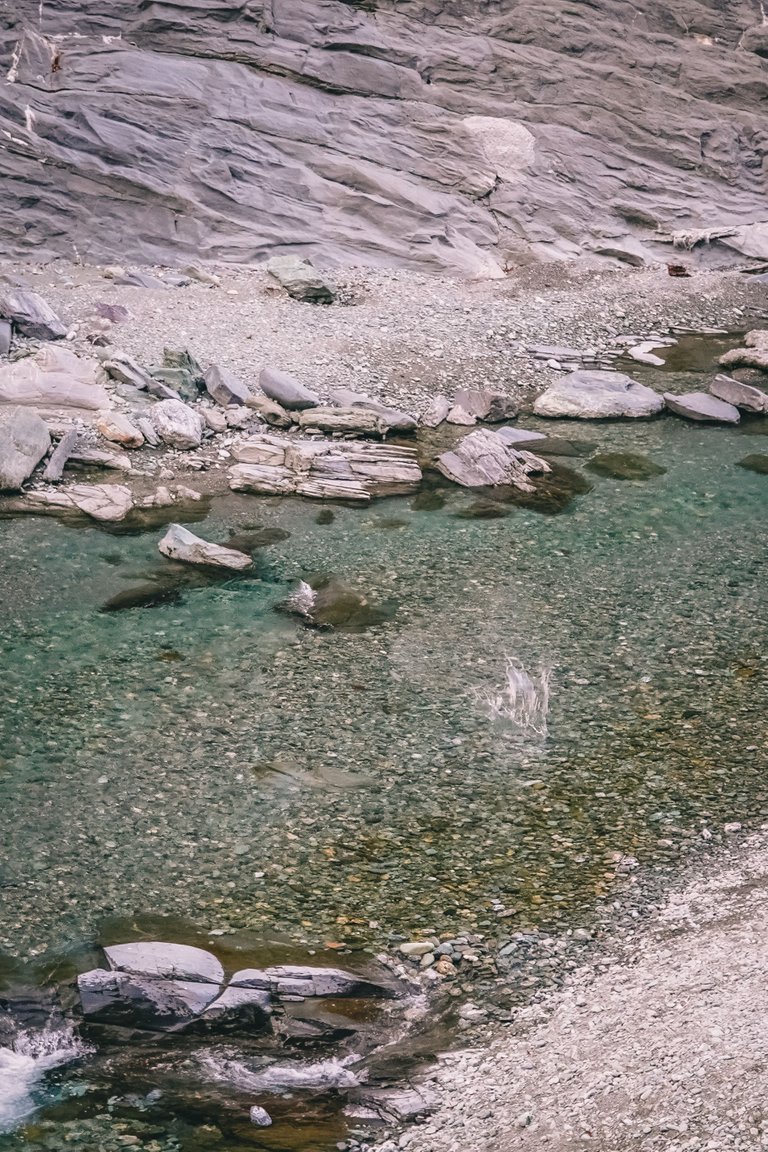
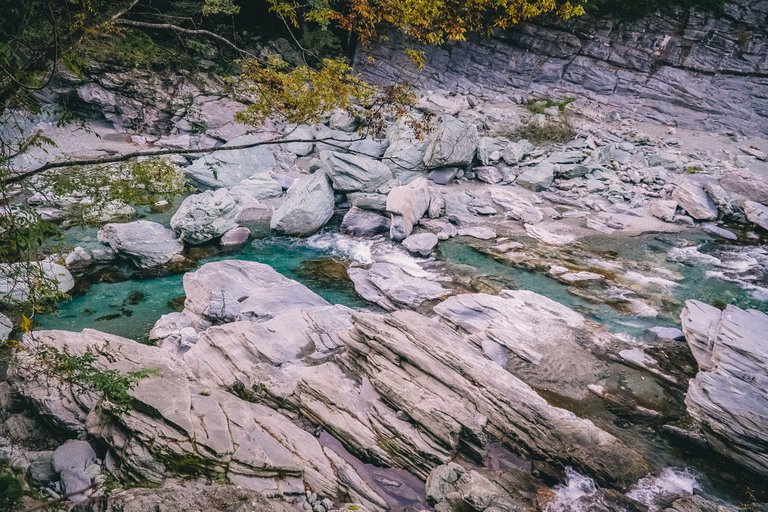

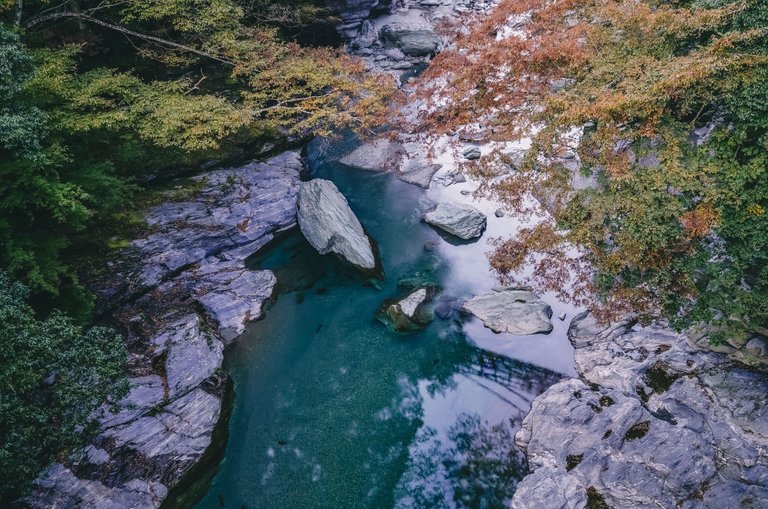
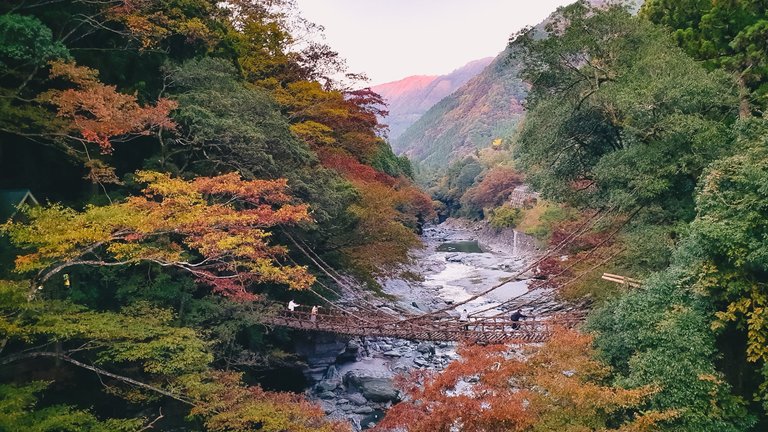
If interested, here are my posts on the 2nd bridge pair in the deeper valley and the Heike folklore museum:
A Swinging Adventure: Crossing the Rustic Oku-Iya Vine Bridges | 体验祖谷秘境 —— 二重藤蔓桥
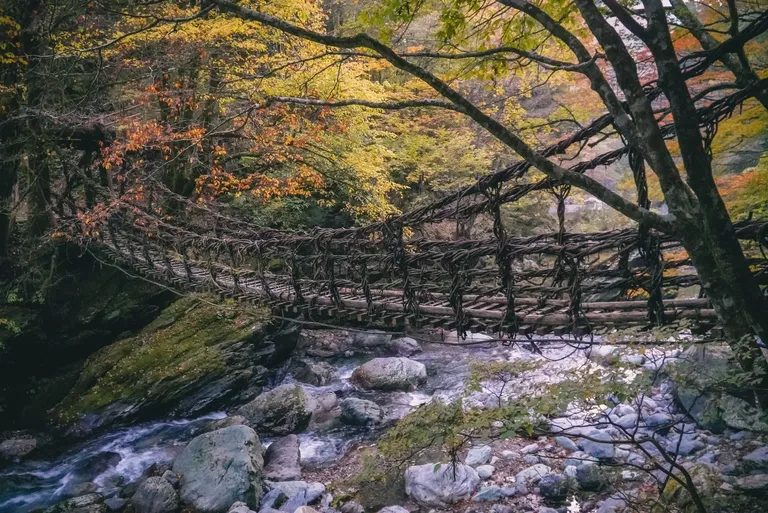
Visit Heike Yashiki Museum of Folklore | 参观平家屋民俗馆

图文 by Donica,谢谢来访!=)
All content by @itchyfeetdonica. Thank you for visiting!

For the best experience view this post on Liketu
Wow what a beautifull area . The water the rocks the nature . I love it really
Stunning bridge and nature indeed!
Congratulations, your post has been added to Pinmapple! 🎉🥳🍍
Did you know you have your own profile map?
And every post has their own map too!
Want to have your post on the map too?
这藤要是活的那更壮观!
可惜几百年了应该死很久了
Daily Travel Digest #1871.
Become part of our travel community:
- Join our Discord
- Learn more about our travel application
Hiya, @LivingUKTaiwan here, just swinging by to let you know that this post made it into our Honorable Mentions in Your post has been manually curated by the @pinmapple team. If you like what we're doing, please drop by to check out all the rest of today's great posts and consider supporting other authors like yourself and us so we can keep the project going!How a beautiful place,,, 👍👍👍